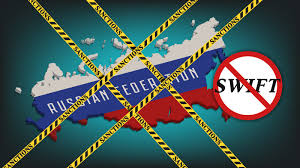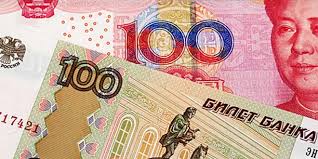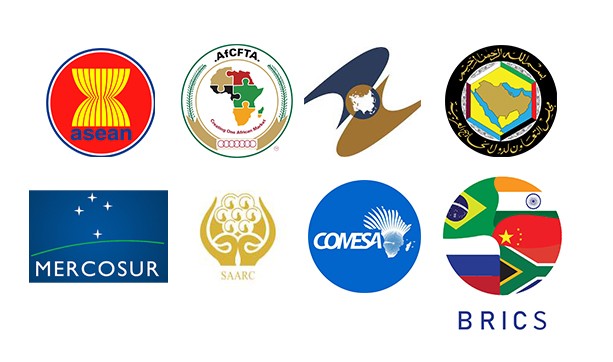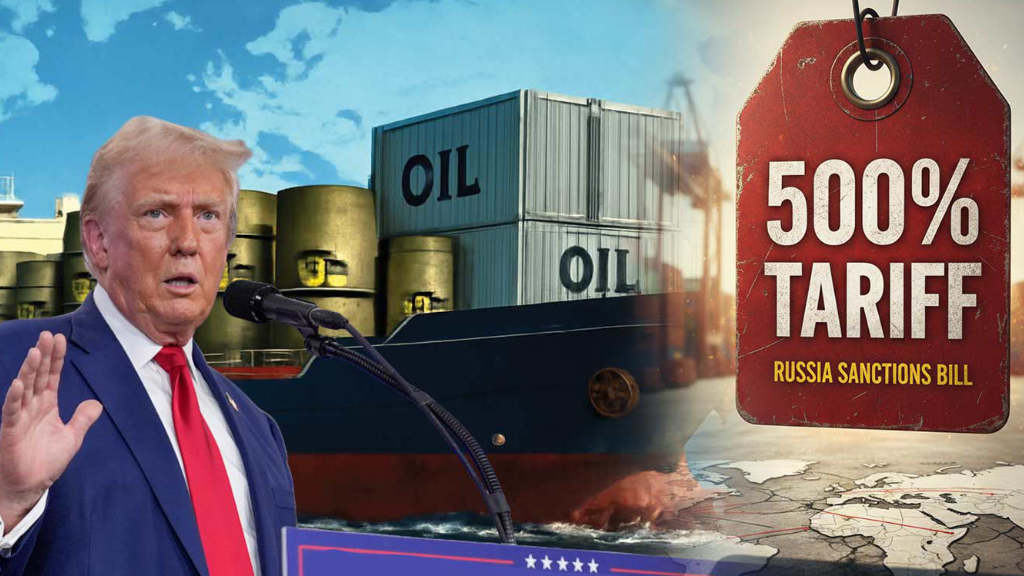The role of national currencies in global trade is changing, as countries look at ways of at least partial minimisation of exposure to the US dollar. We discuss the evolutionary trends.
Two main global financial evolutionary events are happening at the same time: the first is changes to the role of the US dollar, which will prompt additional changes, and the second is technology and the digitisation of financial transactions. Both are intertwined, and neither have precedent, implying future US and global fiscal uncertainty.
The US Dollar Debt

In terms of the US dollar, the United States itself has largely been responsible for negative developments in terms of maintaining its credibility as a global currency. This has happened for four main reasons: One, the US has acquired so much US-dollar issued debt – US$32.72 trillion – that it appears almost impossible for this to ever be paid back. Quite how this can be managed in a responsible manner is the subject of much debate. But it has created a scenario where foreign governments are increasingly wary of investing in additional US dollar debt until a management system is put in place that will be able to support such a load. Without this, the US dollar will become prone to increasing shocks, leading to uncertainty and mistrust on the global financial markets. No solution has yet been proposed to correct this. The US could also default on its debt, leading to US bond holders carrying losses on their investments. This would have huge negative impacts on global trade.
Printing More Dollars

Related to this is the second issue of simply printing of more US dollars to cover up the fiscal debt. Yet ultimately, this debases the actual value of the currency and encourages inflation. Doing so has become a US treasury norm, yet the longer such actions continue, the worse the ultimate damage to the US dollar will be. Some economists are predicting an eventual major crash, introducing a massive recession and a huge reduction in US – and global – asset values.
The US Dollar As A Weapon

Third, the United States has used the US dollar as a trade and geopolitical weapon. It has done this in two main areas, firstly by manipulating the US dollar currency exchange rates in order to damage other national currencies when the US wants to inflict fiscal punishments or seek trade advantages. It has systematically done this numerous times, to Venezuela, Iran, Turkey and Russia amongst others.
The Ultimate Punishment: SWIFT Disconnection

Fourth, it has also used the global SWIFT payment network as a switch to turn US dollar trade on and off according to its policies. The most notable economies to have been abused in this way are the Iranian and Russian economies. Other governments are becoming concerned that these punishments could in future be meted out to them, which also creates mistrust and fear of US dollar over-exposure. Any one of these problems are serious. It appears ultimately unlikely the United States will be able to fend off the repercussions of them all. In short – the United States has massively over-extended itself and damaged its own reliability as a global trade partner.
Achieving Currency Balance To Minimize Risk

Counterbalancing each of these is therefore a matter of some debate – and urgency – amongst other countries as they begin to look for alternatives and a safe place to hide should the US dollar collapse and the US economy go into a severe recession. There is no doubt that as and when this happens, global trade will also suffer, especially if the US economy can’t afford to buy. This is manifesting itself in several ways. Most notable is Russia, whose US-linked trade and US-dollar holdings are at record lows. Moscow has effectively inoculated itself from any future problems with the United States economy. Other countries are doing the same: China, although it finds it difficult to wean itself off US export dependency, is slowly reducing its US exports and looking to develop alternative markets – one of the main concepts behind its Belt & Road Initiative. China’s average monthly exports to the United States in the first four months of this year averaged US$32.25 billion, in 2023 they averaged US$35.5 billion. The main point for China is that it continues to look for alternative trade partners – like Russia, it has been busy in Asia, Africa, the Middle East and Latin America to do just this.
The New Emerging Regional Trade Blocs

Apart from shifting the trade focus away from the United States, other developments are occurring as well. These include a further three significant directions. First, the geopolitical evolution of trade blocs. The BRICS is most often discussed, but there is also the Eurasian Economic Union and Shanghai Cooperation Organisation that are relevant to Russia. There has been discussions about merging these. Other trade blocs have also become more prominent – for example the African Continental Free Trade Agreement, Latin America’s Mercosur, the Gulf Cooperation Council, South Asia’s ASEAN, amongst many others. All seek to promote inter-regional trade rather than specific US trade targets.
A Return To Gold?

Secondly, some of these blocs, including the BRICS, are discussing alternative currency platforms. For the BRICS, there are two considerations – one is as Russia is blocked from SWIFT and highly sanctioned, there is a need to find a way to pay Russia for its much needed energy resources and other products. Second is to encourage multilateral trade without recourse to the US dollar. Yet creating a new currency is a complex matter. Economies wax and wane and exchange rates vary. What security should be in place to support such a trade unit? With the US dollar supported by US$35 trillion of debt, fiscal academic thought is shying away from the US model meaning a potential return, at least in part, to real assets. One proposal for a unified BRICS trade unit is the “BRICS Bridge” allowing the ten current members to exchange units based 60% of their sovereign currencies and 40% backed by their gold reserves. Interestingly, Russia has some of the largest gold reserves in the world.
The Digital Currency Revolution

The third new influencer to come on the scene is technology. The mechanisms for providing digital currency transactions are already well known. Yet Central Banks are understandably reluctant to deploy these until all possible failsafe’s have been checked and made foolproof. That includes hacking, as well as fiscal warfare. However, numerous countries, including Russia, are in the process of conducting real-time trials. Launches are expected from 2025/26. How we physically transfer money will have changed completely by 2030. Who we transfer that capital too is also likely to change as the larger global community moves away from the United States and develops into a series of regional blocs, able to intertrade with each other without US dollar involvement.
But there is no need to feel the US will become estranged, at least not just yet. It has effectively captured the entire European Union as a market to feed on. But for Russia, and most other nations, there is a far bigger picture – where non-US dominated, global trade opportunities beckon.





